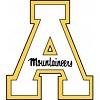North Carolina State University (NC State) began as a land-grant institution in 1887, with a focus on agriculture and research. Today, NC State is one of the nation’s largest schools, serving more than 36,000 students, enrolled in 300 degree programs in a wide range of disciplines. Programs are offered in 12 colleges and more than 60 academic departments.
The College of Design, Department of Art + Design, houses the Graphic Design program, which offers two degree paths—a Bachelor of Graphic Design (BGD) and a Master of Graphic Design (MGD). Both programs are NASAD (National Association of Schools of Art and Design) accredited and the MGD is one of the few graphic design graduate programs with STEM Classification (CIP).
Students in the undergraduate program “study comparative ideas about, and methods for, creating visual communication,” says the school. “Through project-based assignments, students acquire strong formal and conceptualization skills. They learn and practice graphic design strategies, such as mapping and diagramming, to understand design problems, audiences, contexts, and visualization techniques, including ideation and iteration, to explore and refine design possibilities and determine appropriateness.”
All undergraduate students have the opportunity to take an advanced studio in another College of Design discipline (a swing studio), study abroad for a semester or summer at the NC State Prague Institute, and gain professional experience through paid internships within leading firms, and/or participate in sponsored studios as part of the graphic design curriculum.
Graduate students have two options: two-year and three-year programs. In both, students will “closely examine the cultural and technological situatedness of graphic design and its products, and seek understanding of the people who use and interact with the things that graphic designers make.”
Students in all programs will explore and become proficient in a wide range of media — print, web, mobile, virtual reality, augmented reality, and embedded technology. Students will also practice visualization strategies such as mapping, diagramming, and storyboarding and develop strong formal and conceptualization skills through project-based assignments. They will also immerse in advanced studios that cover special topics such as accessible design, branding, and data visualization.







